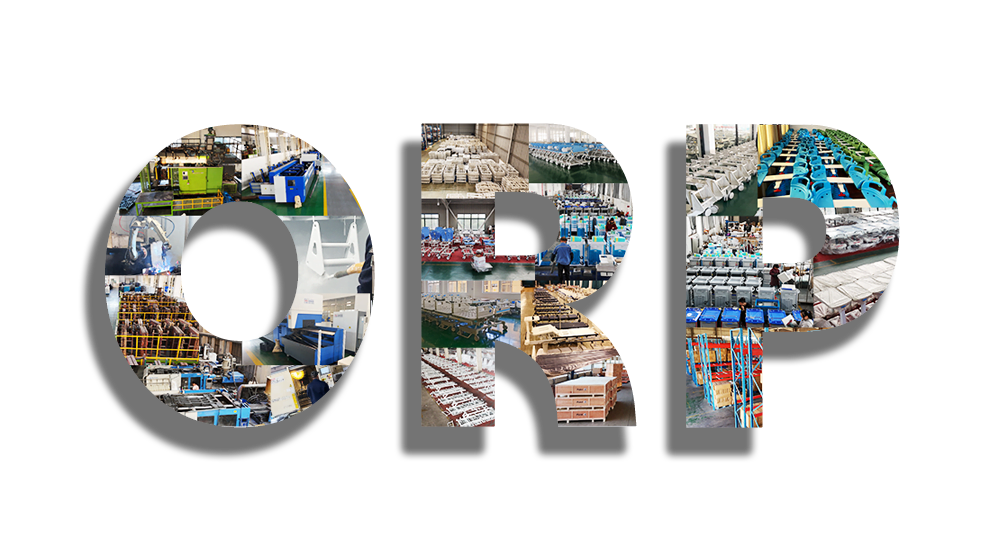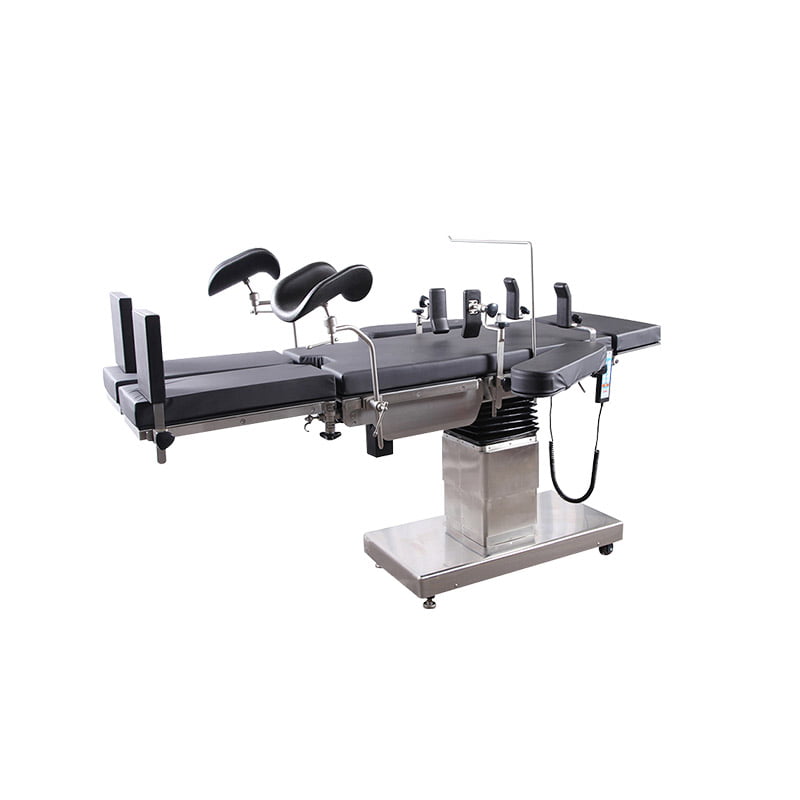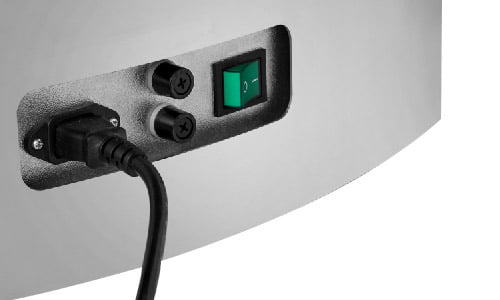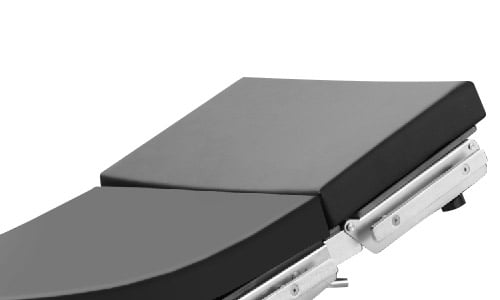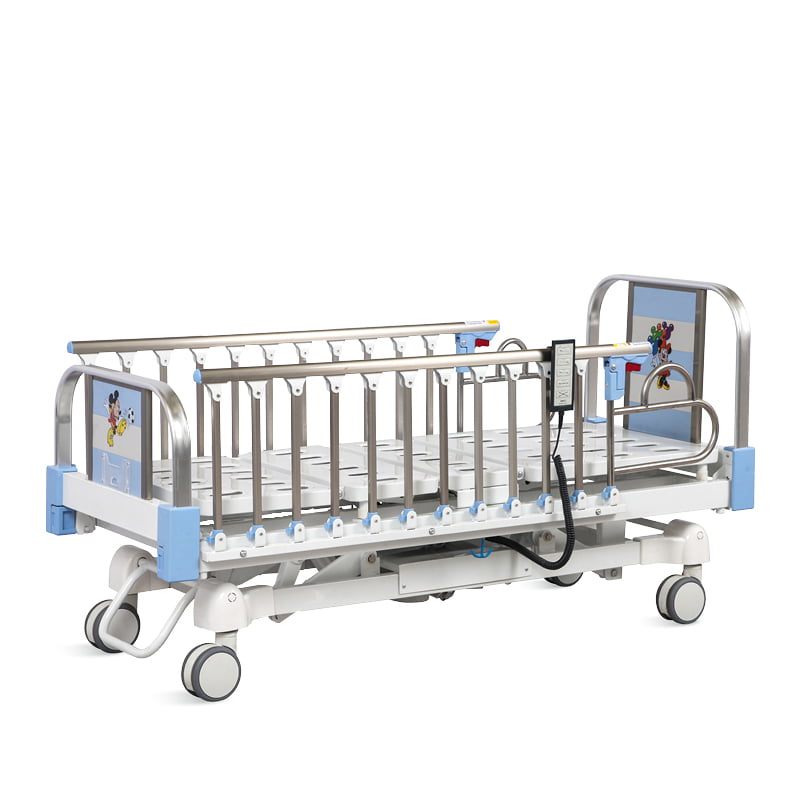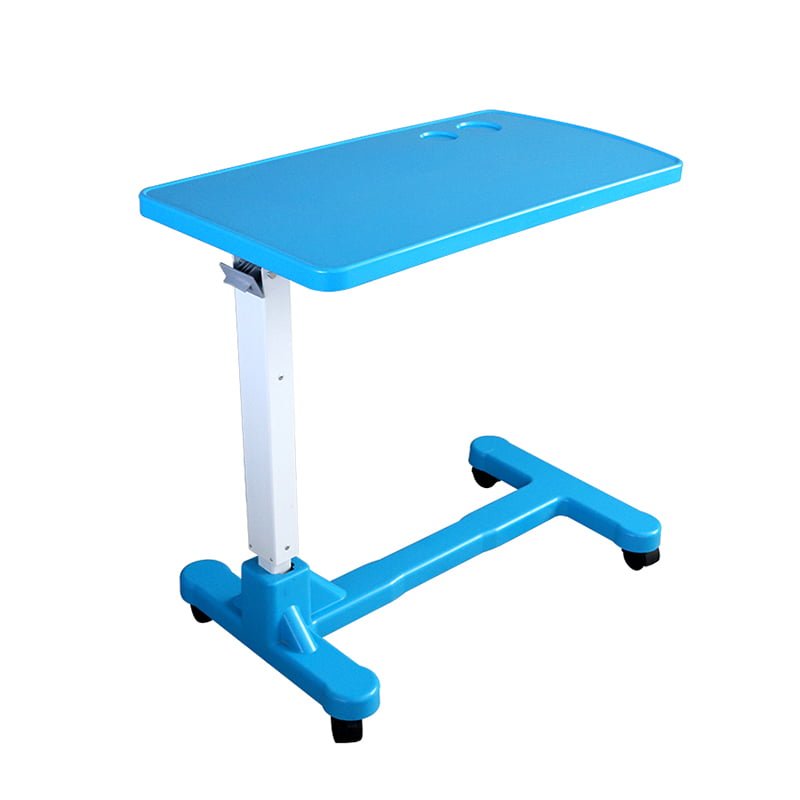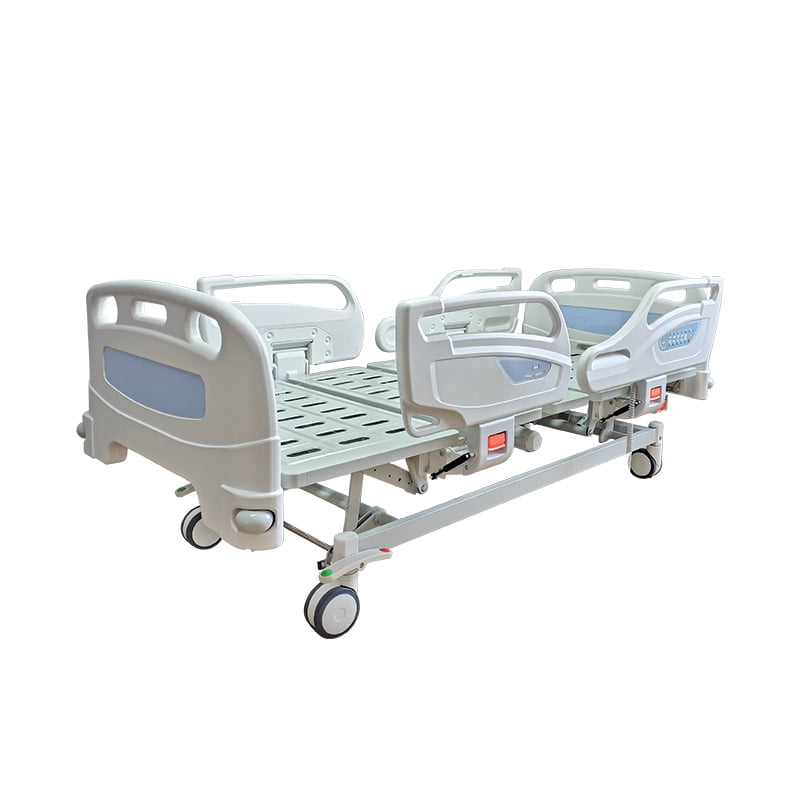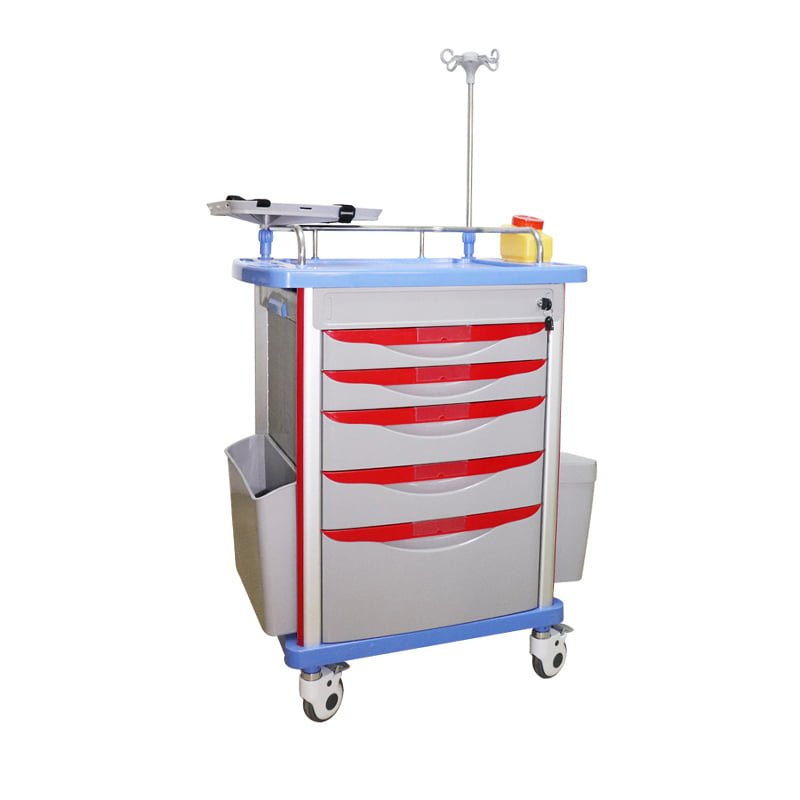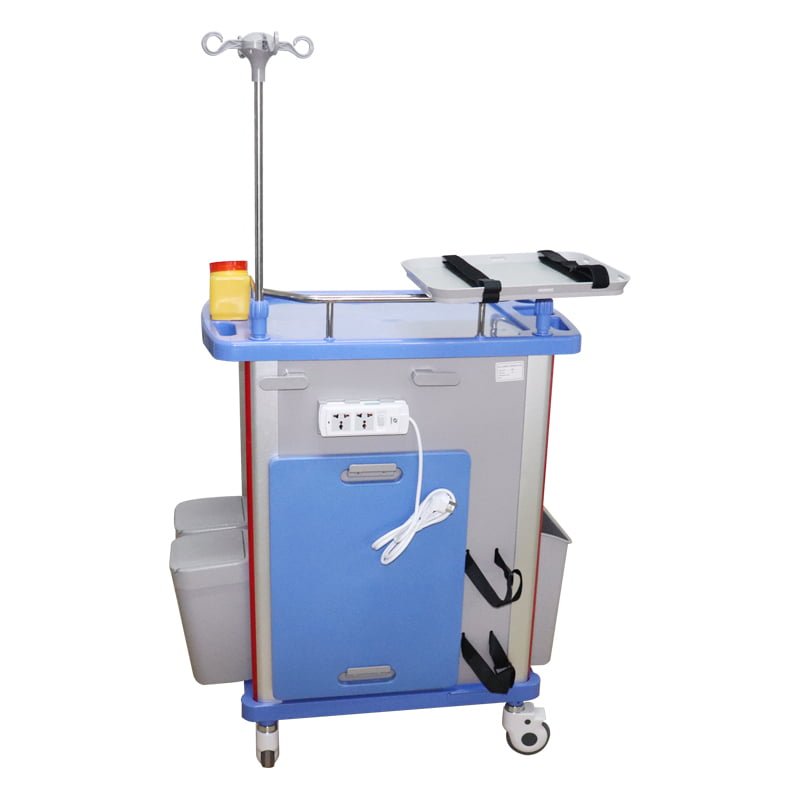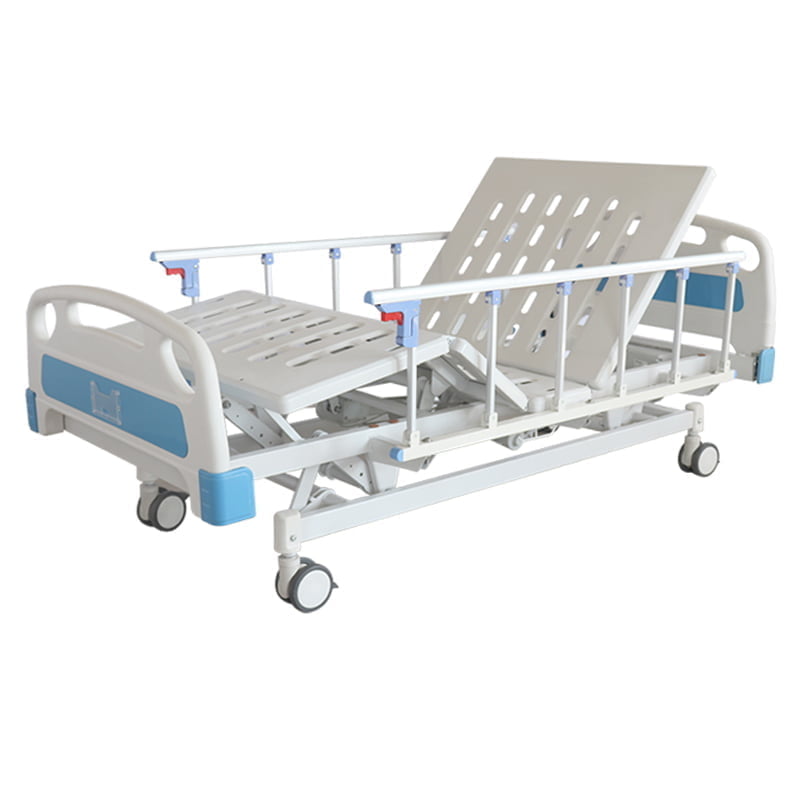ORP-OTE03 Luxurious Electric Operating Tables
Operating tables are flats, movable pieces of medical equipment used in surgical procedures.They provide stable and adjustable surface for the surgical team to work on and can be moved around easily to provide access from different angles. Operating tables come in a variety of sizes and styles and are designed to be comfortable and ergonomic for both the patient and the surgical team. They are an essential piece of equipment in any operating room and play a critical role in ensuring the safety and comfort of patients during surgery.
Parameter Teknikal:
| Panjang Luaran | 2070mm |
| Lebar Luaran | 550mm |
| Ketinggian Meja Min | 700mm |
| Ketinggian Meja Maks | 1000mm |
| Trendelenburg | 25º |
| Songsang Trendelenburg | 25º |
| Lateral Tilt Left/Right | 20º |
| Head Plate Adjustment | -90º-45º |
| Back Plate Adjustment | -20º-80º |
| Leg Plate Adjustment | -90º-15º |
| Leg Plate Horizontal Positioning | 90º |
| Kidney Bridge Elevation | 120mm |
| Horizontal Sliding | 300mm |
| Kapasiti Muatan | 250kg |
Konfigurasi Teknikal:
| Bed Frame | 1pc |
| Tilam | 1ditetapkan |
| Anesthesia Screen Frame | 1pc |
| Shoulder Support with Cushion | 2pcs |
| Arm Support with Cushion | 2pcs |
| Leg Support with Cushion | 2pcs |
| Foot Support with Cushion | 2pcs |
| Kidney Bridge Handle | 1pc |
| Pengawal Tangan | 1pc |
| Brake Pedal | 1pc |
produk pengenalan:
Kawalan kualiti:
- Teknologi: Operating tables have greatly benefited from advancements in technology.One notable innovation is the use of robot welding technology, which ensures enhanced precision and structural integrity. By employing this technology, operating tables can be constructed with a 360° comprehensive design, eliminating any dead angles that may hinder disinfection and sterilization processes. This feature allows for a more thorough and efficient cleaning, reducing the risk of infection. Selain itu, gas spring technology has been incorporated, enabling smoother and more accurate movements of the table. This ensures precise positioning of patients during surgical procedures, enhancing the overall surgical experience. These technological advancements have greatly improved the functionality and safety of operating tables, ultimately benefiting both patients and medical professionals alike.
- Standard Keselamatan: ORP Operating tables are designed and manufactured with the utmost priority placed on safety standards.To ensure compliance, these tables are built to meet internationally recognized certifications such as ISO13485:2016 dan ISO9001:2015. ISO13485:2016 specifies requirements for a quality management system specific to the medical device industry, ensuring that the operating tables are produced following strict quality control measures. ISO9001:2015, on the other hand, mandates a Quality Management System (QMS) which guarantees that the design, Pengeluaran, and delivery of operating tables meet the highest quality standards. By adhering to these certifications, ORP operating tables demonstrate their commitment to ensuring patient and staff safety, as well as reliable performance and durability.
- Reka bentuk: Operating tables are designed with numerous considerations to optimize patient comfort and surgical requirements.One notable feature is the full sponge covering design, which helps alleviate patient fatigue during lengthy procedures. The use of removable brackets also allows for the customization and adaptation of the table to meet a variety of surgical needs. This ensures that surgeons have the necessary flexibility to position patients accurately and securely. The direct and reliable operation concept further enhances the ease of use, enabling simple and independent positioning. This design facilitates universal functionality, making the table versatile and adaptable to various surgical procedures. Selain itu, the operating table’s design takes human mechanics into account, ensuring optimal ergonomics for both medical professionals and patients. By prioritizing these design elements, operating tables provide a comfortable and efficient environment for surgical interventions.
- bahan: Operating tables are constructed using a combination of high-quality materials to ensure both durability and patient comfort. Memory foam pads are utilized to provide maximum comfort to patients during surgical procedures. This material conforms to the patient’s body, relieving pressure and preventing the formation of pressure ulcers. Selain itu, the accessory parts of the operating tables are made from polyurethane (PU) using a molding process. This ensures that these components are robust and can withstand the demands of surgical interventions. For the main body of the operating table, stainless steel is commonly used. Stainless steel is known for its strength, ketahanan, and resistance to corrosion, making it an ideal material for the structural components of the table.
Fungsi:
- Trendelenburg and Reverse Trendelenburg: Operating tables are equipped with the Trendelenburg and Reverse Trendelenburg features, allowing for the controlled tilting of the patient’s body during surgical procedures.The Trendelenburg position involves tilting the entire patient towards the head end of the table, with an inclination of up to 25°. This position is commonly used in surgeries where access to the upper abdominal or pelvic areas is required. Sebaliknya, the Reverse Trendelenburg position involves tilting the patient’s body towards the foot end of the table, also with an inclination of up to 25°. This position is useful in surgeries involving the head and neck areas or to prevent fluid from accumulating in certain regions. Both the Trendelenburg and Reverse Trendelenburg positions provide surgeons with enhanced access and visualization, improving surgical outcomes and patient safety.
- Whole Table Adjustment: Operating tables are equipped with a range of adjustment capabilities to accommodate various surgical needs.One key aspect is the height adjustment feature, which allows the table to be raised or lowered within a height range of 700mm to 1000mm. This functionality ensures that medical professionals can position the table at an optimal working height, providing ergonomically favorable conditions for the surgical team. Selain itu, operating tables often have a horizontal sliding function, enabling the table to move horizontally up to 300mm. This adjustment capability facilitates precise positioning of the patient during procedures, allowing for improved access and visibility for the surgical team.
- Lateral Tilt: Operating tables are designed with a lateral tilt feature that allows for tilting left or right by a maximum angle of 20°.This capability enables medical professionals to adjust the table’s angle to accommodate specific surgical requirements. Lateral tilt is particularly useful during procedures that require access to specific areas of the patient’s body, such as orthopedic or urological surgeries. By tilting the table, surgeons can achieve optimal positioning and visualization, facilitating their work and improving patient outcomes. The 20° tilt range ensures a sufficient degree of flexibility while maintaining stability and safety during surgical interventions.This adjustable lateral tilt feature is a valuable component of modern operating tables, enhancing their functionality and versatility in diverse clinical settings.
- Head Section Adjustment: Operating tables are equipped with a head section adjustment feature that allows for precise positioning of the patient’s head during surgical procedures.This adjustment capability enables the head section of the table to be positioned at an upward angle of up to 45° or downward to a maximum angle of 90°. This range of motion allows medical professionals to achieve optimal patient positioning for various types of surgeries, such as neurosurgery or ophthalmic procedures. The upward angle facilitates improved access and visibility, while the downward angle allows for a more comfortable position for the patient during recovery. With the ability to adjust the head section, surgeons can ensure the patient’s head is positioned in the most favorable and safe manner, enhancing the surgical experience and overall patient care.
- Pelarasan Bahagian Belakang: Operating tables are designed with a back section adjustment feature that allows for precise positioning of the patient’s back and spine during surgical procedures.This adjustment capability enables the back section of the table to be positioned at an upward angle of up to 80° or downward to a minimum angle of 20°. This wide range of motion allows medical professionals to achieve optimal patient comfort and positioning based on the surgical requirements. The upward angle allows for improved access to the surgical site, while the downward angle provides a more relaxed position for the patient during recovery. By adjusting the back section, surgeons can ensure proper alignment of the patient’s spine and torso, facilitating better visibility and access during the procedure.
- Pelarasan Bahagian Kaki: Operating tables offer a leg section adjustment feature that allows for precise positioning of the patient’s legs and lower body during surgical procedures.This functionality enables the leg section to be lifted up to an angle of 45° or lowered down to 90°. This range of motion allows for flexible and optimal positioning of the patient’s legs, ensuring comfort and accessibility for the surgical team. Selain itu, the leg section can be horizontally positioned at 90°, accommodating procedures that require lateral access. Tambahan pula, the left and right leg boards can be adjusted apart from each other, providing the necessary space for procedures involving both legs simultaneously. The leg section adjustment, with its lifting, lowering, horizontal positioning, and separate leg boards, contributes to the overall versatility and adaptability of operating tables, assisting medical professionals in delivering effective surgical care.
- Kidney Bridge Adjustment: Operating tables feature a kidney bridge adjustment, controlled through a handle,allowed for the lifting of the kidney bridge by approximately 120mm. This adjustment is specifically designed to provide support and ensure the proper alignment of the patient’s torso during surgical procedures involving the kidneys or other abdominal organs. By lifting the kidney bridge, surgeons can create a space underneath the patient’s back, offering better access and visibility for the medical team. This adjustment facilitates a more comfortable position for the patient and aids in maintaining the desired surgical posture. The kidney bridge adjustment enhances the flexibility and versatility of operating tables, enabling medical professionals to perform precise and efficient surgeries.
Accessories:
- Tilam: The mattresses of operating tables are designed with patient comfort and practicality in mind.They typically feature an internal memory sponge that offers sufficient support while being soft and comfortable. This ensures that patients do not feel uncomfortable during long surgical procedures. The use of memory sponge also helps to prevent pressure ulcers and promotes proper blood circulation. Selain itu, the exterior of the mattress is commonly made of leather.This material is not only durable but also waterproof and breathable, allowing for easy cleaning and maintenance. The waterproof feature prevents any liquids from seeping into the mattress, which is crucial for maintaining a hygienic environment in the operating room. The breathable nature of the material helps regulate airflow, reducing the buildup of heat and moisture. With a combination of comfort, support, dan kemudahan pembersihan, the mattress of operating tables provides an optimal surface for patients.
- Anesthesia Screen Frame: The anesthesia screen frame is an important component of operating tables designed to facilitate the administration of anesthesia during surgical procedures.It serves as a support structure, located near the head of the table, where the anesthesia equipment can be securely mounted. The frame is specifically designed to hold various essential anesthesia tools and monitors, such as the anesthesia machine, vaporizers, monitors, and other necessary equipment. This setup allows the anesthesiologist to have immediate access to all the required instruments and monitors, ensuring safe and efficient delivery of anesthesia to the patient. The anesthesia screen frame is typically adjustable and can be positioned according to the anesthesiologist’s preference and the surgical requirements. It enhances the organization and accessibility of anesthesia equipment, contributing to a smooth and controlled administration of anesthesia, ultimately ensuring patient comfort and safety.
- Support with Cushion: Operating tables often feature various supports with cushions to ensure patient comfort and proper positioning during surgical procedures.These supports typically include shoulder support, arm support, leg support, and foot support. The cushions on these supports are designed to provide adequate padding and contouring, alleviating pressure points and preventing the patient from experiencing discomfort during extended periods of surgery.Additionally, these supports are often removable and adjustable, allowing for customization based on the patient’s specific needs and the requirements of the procedure. The angle of the supports can be adjusted to achieve the optimal positioning for the patient, ensuring proper alignment and stability throughout the surgery. The support with cushions on operating tables enhances patient comfort, helps maintain a stable surgical position, and contributes to overall positive surgical outcomes.
- Pengawal Tangan: The hand controller of operating tables is a crucial component that allows for the convenient and precise control of the table’s functions.It is designed to provide medical professionals with easy access to various table adjustments at their fingertips. With the hand controller, users can control functions such as height adjustment, senget, trendelenburg, and reverse trendelenburg, among others. This intuitive control system enables seamless and efficient positioning of patients during surgery. Selain itu, the hand controller often includes a locking mechanism to ensure that the table remains securely in the desired position once adjusted. This feature enhances safety and stability during procedures by preventing accidental movement or shifts in the table’s position.
- Brake Pedal: The brake pedal of operating tables is a vital component that plays a critical role in ensuring the stability and safety of the table during surgical procedures.The brake pedal is typically equipped with a central locking mechanism that allows for the simultaneous control of all the castors on the table. When the brake pedal is engaged by stepping on it, it effectively immobilizes the table, preventing any unintended movement. This feature is essential to maintain a stable and secure platform for surgical interventions, keeping the table firmly in place. By controlling the castors and preventing mobility, the brake pedal adds an extra layer of safety, minimizing the risk of accidents or injuries during surgeries. The sturdy locking mechanism provided by the brake pedal helps create a controlled environment, ensuring surgeons and medical staff can focus on the task at hand without worrying about the table moving unexpectedly.
WASH BASIN CUTOUT
Sink socket design for surgical cleaning, considering intraoperative needs.
BATTERY
Rechargeable batteries with external battery charger.
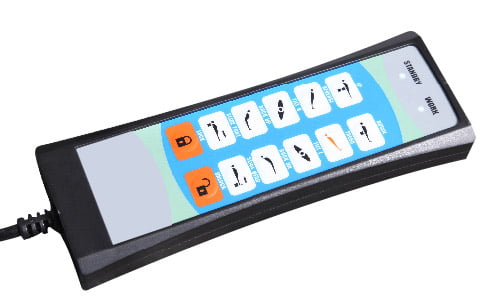
HAND CONTROLLER
All function controlled by hand controller,and can be locked.
HEAD PLATE
Detachable double head plate and leg plate meet operation position needs.
KIDNEY BRIDGE
Provide support and ensure the proper alignment of the patient’s torso during surgical procedures involving the kidneys or other abdominal organs.




